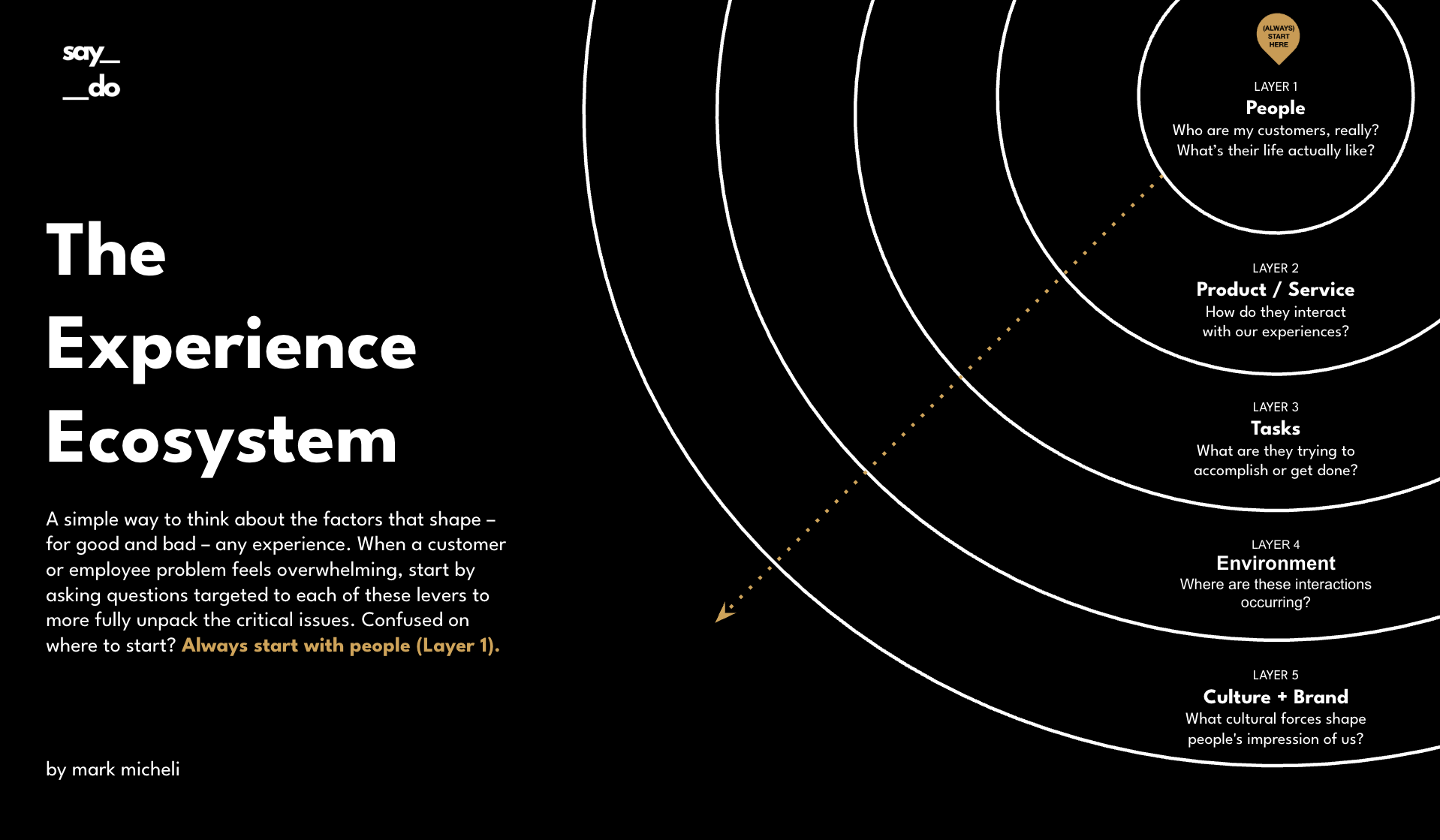A simple framework that aligned teams at Target, Google, and LEGO
Marketing drives acquisition, product builds functionality, design crafts interactions, and AI increasingly shapes personalization – but who orchestrates the whole experience? The answer isn't in your org chart. It's in your customers.
Here's the problem: while departments fight over ownership, customers experience your brand as one thing. They don't care that your email comes from marketing, your app from product, and your support from operations. When these pieces don't connect, customers notice immediately – and they leave.
Think of Google Glass: brilliant technology that solved real problems, but failed because Google optimized for the product, not the ecosystem. Privacy concerns, social awkwardness, and cultural resistance killed adoption. Now Meta is trying again because the ecosystem factors have finally shifted in their favor.
The lesson? You can't just design products or services – you have to design within their context too. But most organizations approach this backwards, asking "How do we coordinate our departments?" instead of "How do customers actually experience us?"
Start Where Your Customers Start
A commandment I live by: "never let your org chart show." Moving from newsrooms to boardrooms taught me that great stories and great strategies both start the same way: with better questions. Working with teams at Target, Google, and LEGO taught me this: great strategies start with better questions about customers, not better coordination between departments.
Here's the framework that's helped guide teams through complex experience challenges – not by reorganizing departments, but by reorganizing how they think about their customer:
Layer 1: People
(Start Here – This Solves 80% of Turf Wars)
Most organizational conflicts happen because teams have different assumptions about who they're serving. Marketing targets "busy professionals," product builds for "power users," and support handles "frustrated customers" – but they're the same person in different moments.
The question that changes everything: Who are our users when they're not using our product?
When I helped Target understand loyalty program behavior, we discovered members weren't just "shoppers" – they were family coordinators managing complex household needs. This insight aligned teams around designing for coordination, not just transactions, which drove the program from beta to 100+ million members.
Layer 2: Product/Service/Brand
(Where Promise Meets Reality)
Your brand promises convenience. Then your checkout flow requires seventeen steps. Customers don't blame your UX team—they blame you.
Focus on jobs, not features. What job is your customer hiring you to do that they can't easily do elsewhere?
Layer 3: Tasks
(What Customers Actually)
Watch customers complete real tasks and you'll see how your carefully designed experience actually works in practice.
People combine your tools in ways you never intended. Understanding these unexpected workflows reveals your biggest opportunities.
Layer 4: Environment
(Context Changes Everything)
Your dashboard looks beautiful on a 27-inch monitor. Your customer is looking at it in a Lyft with 15% battery left. Context isn't a nice-to-have.
Instead of building one solution for all contexts, design for context-switching. How can your experience adapt as customer needs change?
Layer 5: Culture + Brand
(The Context You Can't Control)
Cultural momentum makes or breaks experiences. Privacy concerns, AI anxiety, sustainability expectations – these forces reshape entire categories overnight. You exist within this context; you don't shape it outright.
Teams that anticipate cultural shifts instead of reacting to them win bigger and waste less effort fighting headwinds.
Why This Framework Ends Turf Wars
This starts with customer truth, not organizational comfort. When teams can see how their work connects to the same customer reality, they stop optimizing for their department and start optimizing for the outcome.
This framework gives feuding teams a common language. Instead of arguing about whose job it is to own retention, they start asking "What would make our customers hire us for this job again?"
Try This Tomorrow
Pick your biggest cross-team tension. Now talk to three customers about what they're actually trying to do—not about your product, about their life. Most organizational conflicts disappear when everyone's solving the same customer problem.
The question isn't who owns customer experience. The question is: are we actually listening to understand our customer's language?


